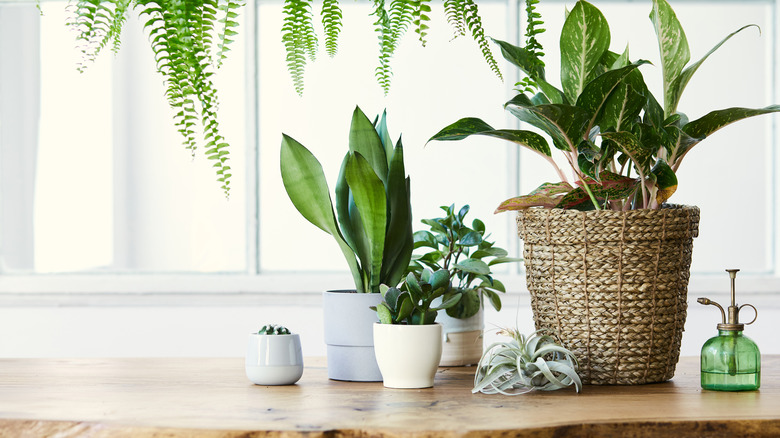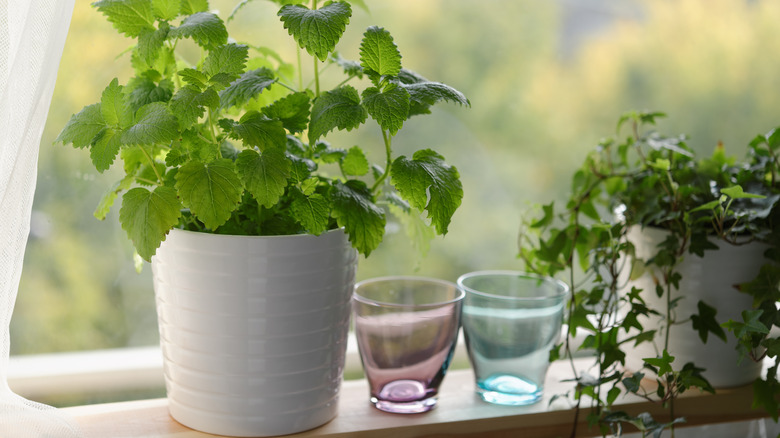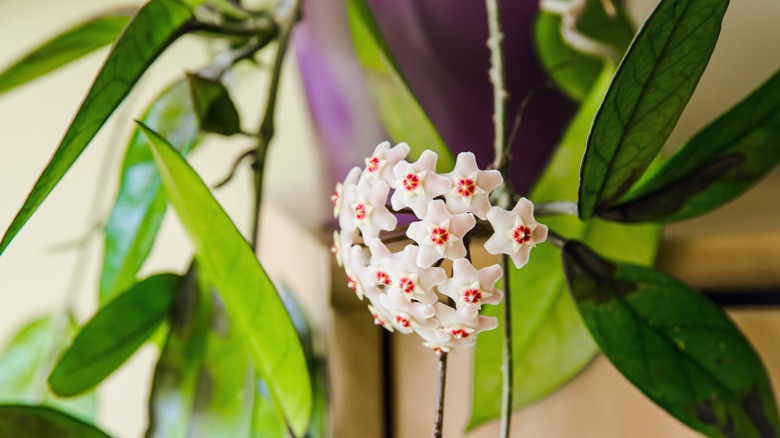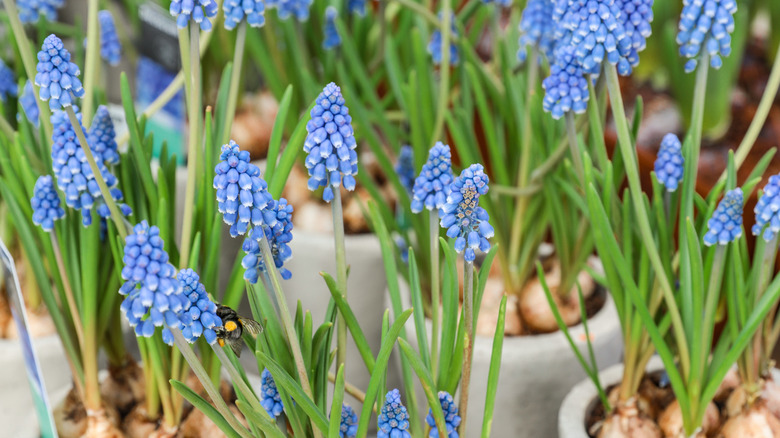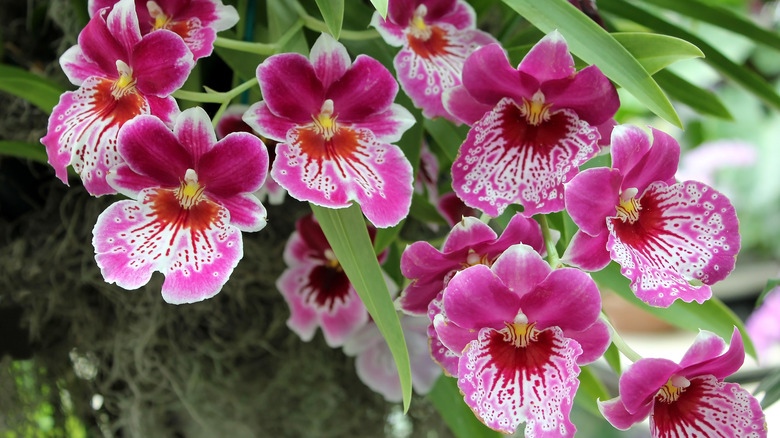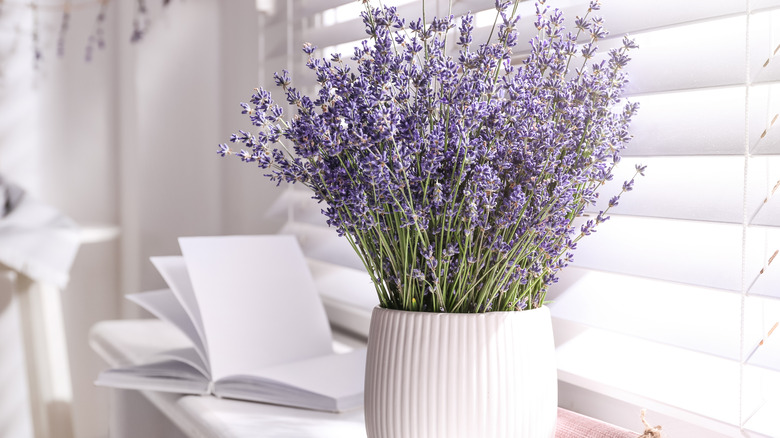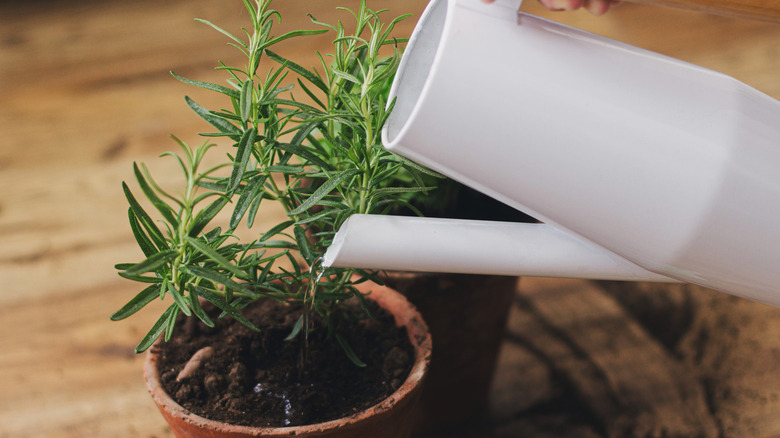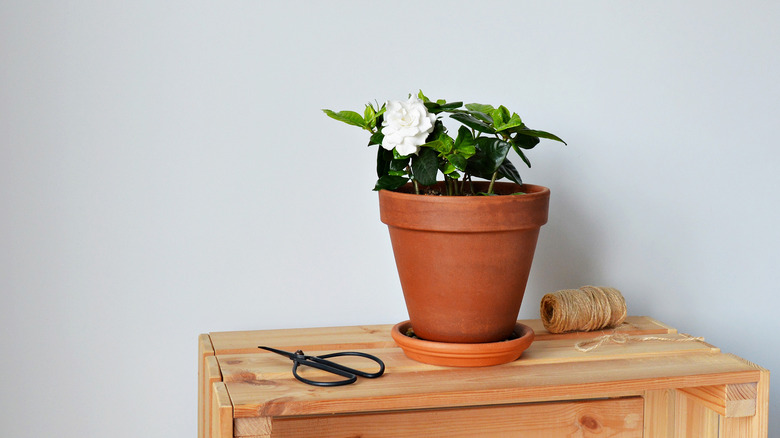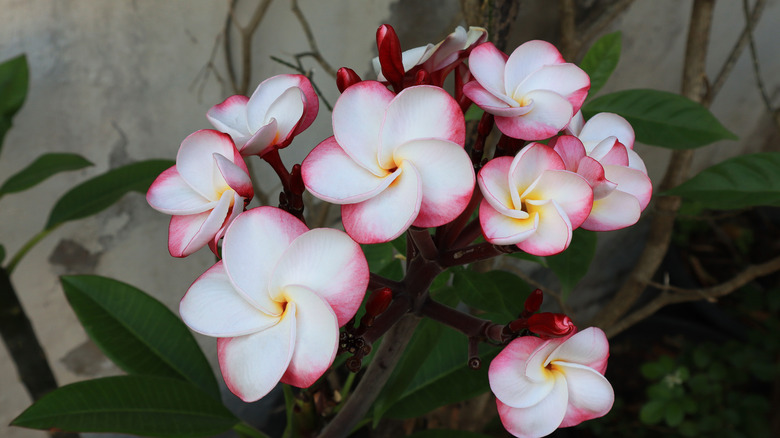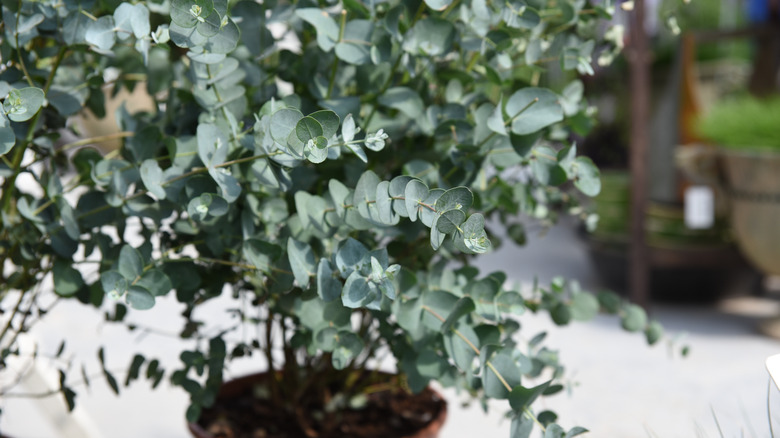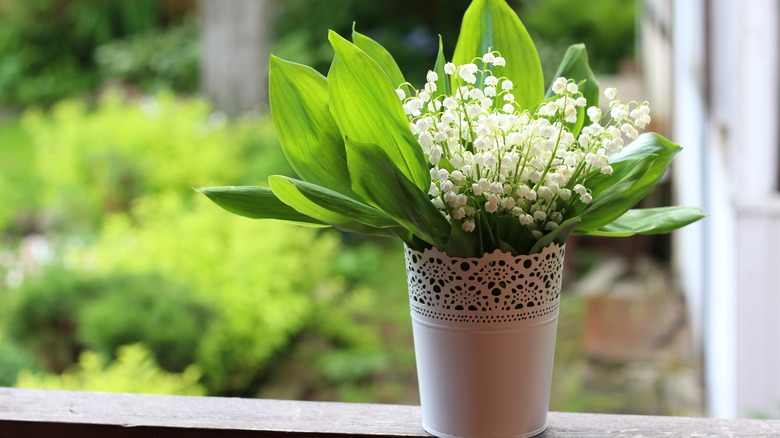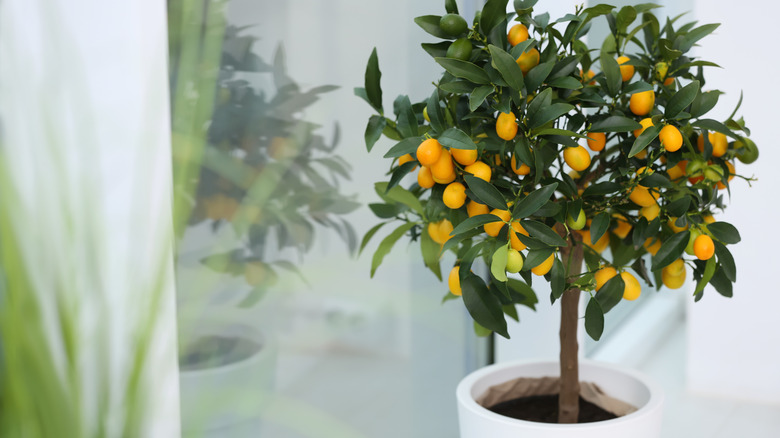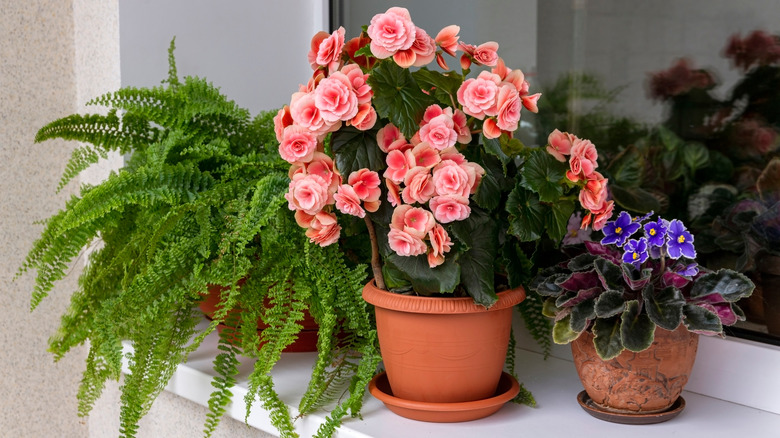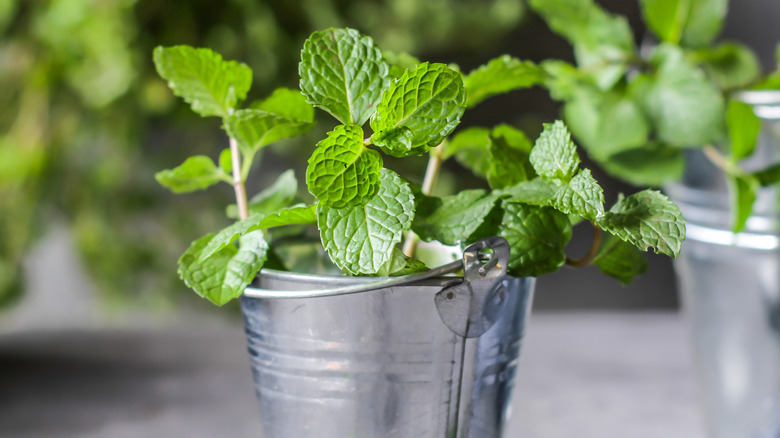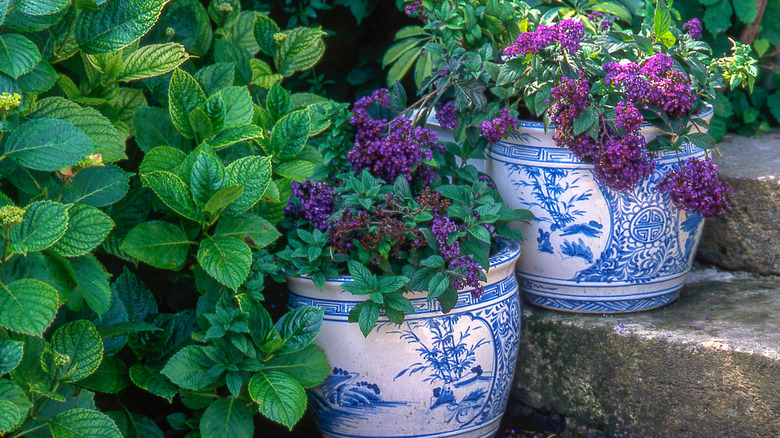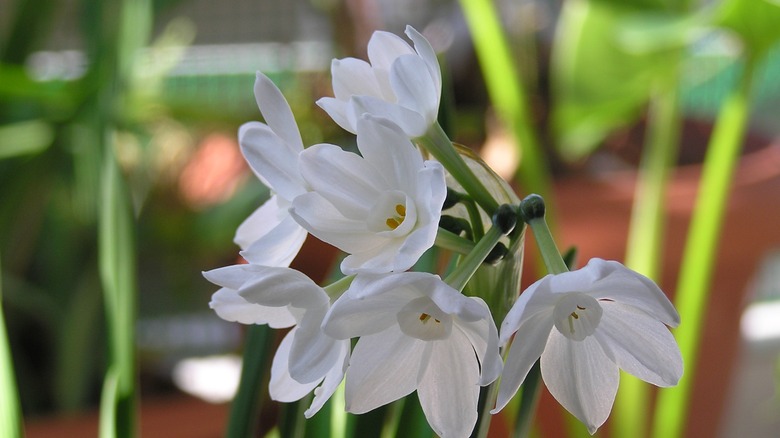15 Houseplants That Will Make Your Home Smell Amazing
We already know that house plants are good for your physical health due to their air filtering processes that allow them to absorb carbon dioxide and emit oxygen, as noted by NBC News. For this reason and their natural beauty, house plants have skyrocketed in popularity over the last few years. Titles like "Plant Mom" and "Plant Daddy" have entered the lexicon, and it's easy to see why. Indoor plants are gorgeous, good for your health, and work as a hobby. Even if you don't have a huge backyard for gardening, you can now enjoy the life of a green thumb.
In addition to air filtering capabilities, house plants can also work as air fresheners if you know which kind to buy. While almost all plants can clarify the air around you, not all can add fresh, sumptuous scents. If you want to ditch the aerosol cans and expensive candles, read this guide to find out which types of plants will make your house smell amazing.
1. Leave it to lemon balm
Love the smell of lemons but don't have the space or time to grow your own citrus tree? Lemon balm (Melissa officinalis) is a great alternative. A member of the mint family, lemon balm gives off the tart, sugared scent of lemons but grows easily and profusely. VeryWellHealth notes that lemon balm can be used in teas, taken as a supplement, and smoothed into the skin as a soothing topical solution. Place it in neutral to acidic, well-drained soil and give it at least five to six hours of sunlight each day.
2. Home run with hoya
Part of the milkweed family, the peculiar hoya vine (hoya carnosa) is commonly known as wax plant or porcelain flower, given its thick, waxy leaves and delicate five-point star flowers. Though native to tropical Asia and Australia, the hoya vine is actually very well suited to indoor growing and gives off a vanilla or citrus scent, depending on the species, says Fragrantica. Place these vines in a crowded pot and let them overflow for a romantic display, or train them along a trellis or post. They require well-draining, lightweight soil and plenty of natural but indirect sunlight.
3. Give it up for grape hyacinth
The grape hyacinth (muscari armeniacum), better known in the U.S. as bluebells, looks much like a shrunk-down hyacinth plant. But while both are members of the asparagus family, the grape hyacinth separates itself because of its bulbous flowers that resemble a cluster of grapes. That's not the only berry-related trait — folks describe the scent of this flower to be a bit grassy and grapey, per Wisconsin Horticulture. An unfussy blue flower, the bluebell does great in nearly any well-draining potting soil and typically needs full sun exposure but can manage with partial.
4. Orchid oasis
Orchids shouldn't just be relegated to prom corsages and bouquets. These beautiful tropical flowers can actually do quite well in indoor gardening, so don't be intimidated. The pansy orchid (miltonia) is fairly easy to take care of, and has a striking resemblance to the common pansy wildflower. They have a lightly floral scent, similar to that of a rose, says Everyday Orchids. Pansy orchids can become burned with too much direct sun exposure, so a mixture of indirect sun and shade is best. Instead of typical potting soil, opt for fir bark or sphagnum moss.
5. Luscious lavender
The lovely lavender (lavandula spp.) is found just about everywhere, from medicine and lotions to teas and syrups, not least of all because of its unique, distinct scent that is both floral, herby, and woodsy. In fact, Grower Direct notes that in Elizabethan Times, when baths were rare, lavender was used to mask odors as a perfume and linen refresher. You can dry its stems and steep them in tea or oils for topical or culinary use. Lavender grows beautifully indoors with full sun exposure, and dry, well-draining alkaline soil.
6. Romancing rosemary
While herbs often get the rub (on chicken breasts), these edible plants are amazing to keep in your indoor garden. Rosemary, in particular, has an amazing evergreen, woodsy, yet botanical scent. Like lavender, rosemary is beloved for its medicinal and aromatherapeutic qualities. According to Healthline, inhaling rosemary can even help reduce stress levels. Use loamy, acidic to neutral soil and give rosemary full sun exposure for best results. If you can't get enough of herbs, check out our guide for making your own countertop herb garden.
7. Grateful for gardenias
The gardenia (gardenia jasminoides) is a fan favorite for scents in and out of the garden. You've undoubtedly seen countless gardenia-scented lotions, perfumes, and body washes. That's due to its clean, peachy, and creamy scent that is just intoxicating, and was even the favorite flower of the late designer Coco Chanel, says Flora Queen. That unique creaminess and zest are in part because the gardenia is part of the rubiaceae, or coffee, family. Gardenias require rich, acidic soil and bright yet indirect sunlight.
8. Perfectly perfumed plumeria
When you can't book a trip to a tropical Hawaiian paradise, bring a little bit of the island into your home with a plumeria shrub. Plumeria, also known as frangipani, is commonly used in Hawaiian leis. Florida Colors Plumeria Nursery notes that plumerias are incredible smelling; they have a lot of variety in fragrance, some smell of stone fruit and citrus, while others are more spicy and creamy. Plant a gardenia shrub indoors in a wide pot with loamy, acidic to neutral soil and give it full sun exposure of up to six hours per day.
9. Euphoric eucalyptus
Eucalyptus (eucalyptus cinerea) is a favorite in bridal bouquets and in spas. This flat leafy plant is hardy and able to grow in abundance and looks great when dried out — it can even keep its scent that is best described as a deeply pungent mint. It's also a handy plant to keep in the house; per Healthline, eucalyptus can alleviate cold symptoms. Put a little in a steaming pot of water and hold your face over the vapors for relief. Plant eucalyptus in well-drained, acidic to neutral soil with full sun exposure.
10. Lively lily of the valley
Beyond their delicate, weeping bells, the lily of the valley (convallaria majalis) is also loved for its unique scent. These blossoms offer a clean, springy scent, similar to jasmine. Despite its name, the lily of the valley is actually not a lily, but a member of the asparagus family, says Town & Country. This is a flower that thrives in shady, woodsy areas, so it's a great indoor plant for lowlight homes, and prefers well-drained rich, acidic to neutral soil.
11. Servin' up citrus
While there are few things as pleasant as a nose full of citrusy scents, growing your own indoor lemon, kumquat, or tangerine tree is no easy feat, so beginner gardeners beware. Note that orange and lime trees do not do well indoors. All citrus trees require more than eight hours of sunlight per day, says Garden Supply Co., so your home will need plenty of direct sunlight. Citrus trees need deeply acidic soil with plenty of organic material. Check with your local nursery to find out the best fertilizer mix for your specific citrus tree.
12. Beggin' for begonias
With around 2,000 species of begonia, there's no shortage of options to scent your home. The tea rose begonia (begonia fibrous hybrid) is an especially attractive option, thanks to its year-round blossoming and rosy floral scent. Like the lily of the valley, the tea rose begonia thrives in mostly shaded areas with light exposure to the sun, per Backyard Gardener. Think of the way the sun hits through forest leaves rather than direct exposure from a window. Plant this begonia in light, moist, and well-draining soil.
13. Must-have mint
Mint (mentha) is known for its ability to thrive just about anywhere, and that includes indoors. Spearmint (mentha spicata) is the most popular culinary mint and what you'll typically find in grocery stores, says Epicurious. It's also superbly easy to grow on your countertop and offers fresh, cooling scents. It can be added to teas, marinades, and topical solutions, making it a fantastic addition to your home. It can grow in partial or full sun, but too much shade will cause less flavorful and scented leaves. Give it loamy, moist, well-drained soil to help it succeed.
14. Heavenly heliotrope
The ancient heliotrope (heliotropium arborescens) has its name rooted in Greek mythology. According to GreekMythology.com, the sun god Helios' spurned his lover Clytie the nymph, and after she died of grief and heartbreak, she transformed into a heliotrope flower, which characteristically turn upwards and follow the sun along the sky. These tightly clustered, flat blossoms also pack scents of vanilla, almond, and cherry pie, even going by the name "cherry pie flower." Common heliotrope flowers require full sun exposure and rich, well-draining soil.
15. Pristine paperwhites
Paperwhites (narcissus papyraceus) are members of the larger narcissus family, along with daffodils. Perhaps what is most appealing about these fragrant blossoms is that they can be forced to bloom nearly any time of the year, even during the gloomiest days of winter, according to Garden Design. To grow paperwhites indoors, Miracle-Gro advises filling a shallow, non-draining dish or pot with small stones, placing the bulbs in the stones, then just covering them with water. They smell musky, sweet, and earthy and are a great winter holiday decoration.
